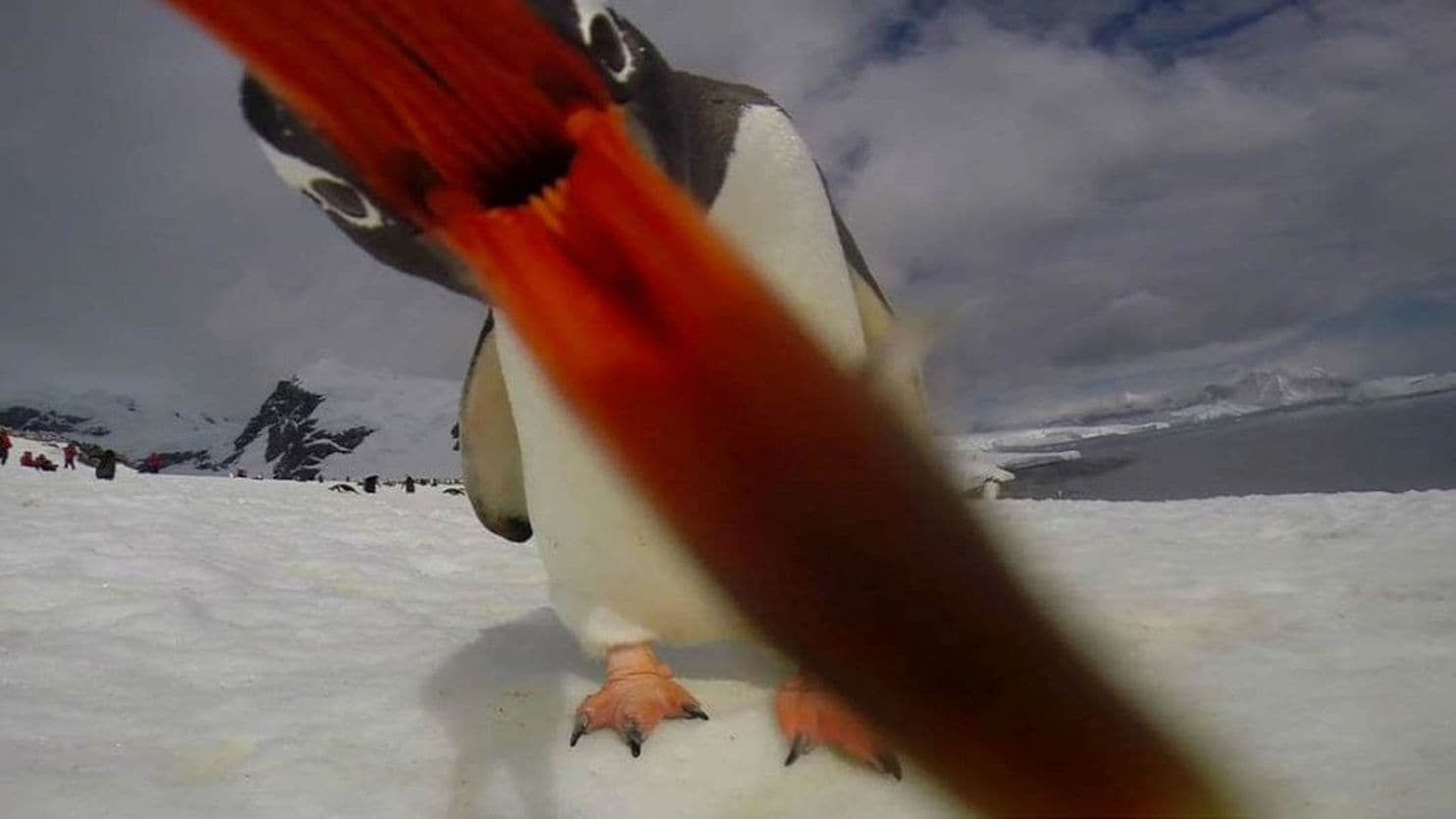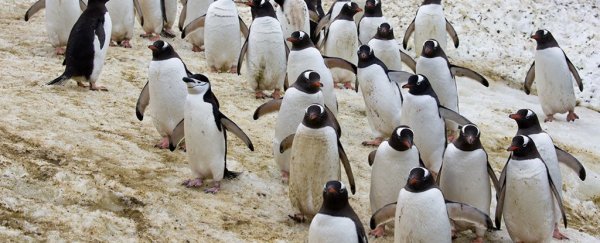The selfie-snapping animals are at it again.
Two emperor penguins in Antarctica captured a short video of themselves after coming across a camera left on the ice by a human.
The Australian Antarctic Division posted the comical, 38-second clip to its social media channels Thursday.
One of the group's expeditioners, Eddie Gault, had placed the camera on the ground near the Auster Rookery - home to a large emperor penguin colony - while visiting the nearby Mawson research station.
"… It didn't take long for the naturally curious birds to seize the opportunity for a selfie," the group said.
The video isn't a true "selfie" - the camera was recording when the birds approached it - but charmed viewers don't seem to mind.
While the video at first captures a handful of penguins from a low vantage point, one bird soon waddles over to the camera and - with a single impressive kick - angles the screen to focus only on its face.
Because everyone has that one friend, another penguin soon nudges its way into the frame.
For about half a minute, the two chirp and cock their heads inquisitively at the screen, before perking up and shaking their heads (and bellies) repeatedly.
Within hours, video of the penguins' happy feat had been viewed more than 30,000 times on the Australian Antarctic Division Facebook page.
It's not the first time, of course, that an animal selfie has made headlines - or even the first time a penguin in Antarctica has captured itself on camera.
In 2013, a Gentoo penguin in Antarctica snapped an epic, open-beaked photo of itself using a GoPro camera from a Canadian cruise company.
 Alex Cowan/G Adventures
Alex Cowan/G Adventures
Because the penguins didn't initiate the recording, the Australian Antarctic Division may avoid the same legal complications that surfaced around the infamous 'monkey selfie'.
In 2011, a male crested black macaque named Naruto took a picture of himself using a camera that belonged to wildlife photographer (and human) David J. Slater.
At the time, Slater had been visiting the Tangkoko-Batuangus Nature Reserve on the Indonesian island of Sulawesi to shadow a troupe of macaques.
On the second day, a group of monkeys began playing with his camera, so he mounted it on a tripod and adjusted the settings to optimize a close-up in case they hit the trigger. They did, he wrote:
I duly moved away and bingo, they moved in, fingering the toy, pressing the buttons and fingering the lens. I was then to witness one of the funniest things ever as they grinned, grimaced and bared teeth at themselves in the reflection of the large glassy lens. … They played with the camera until, of course, some images were inevitably taken! … It was like the joy of seeing your new baby learn about something new and becoming enlightened with a new toy. They loved the shutter noise, but most of all they loved their own faces, 'chimping' away in what seemed to me to be total fun for them.
The ensuing 'monkey selfies' quickly went viral and were featured in a 2014 photography book by Slater called Wildlife Personalities. Notably, he specified in the book that "the shutter was pressed by the monkey."
In 2015, People for the Ethical Treatment of Animals sued Slater for damages, alleging that the human had infringed on Naruto's copyright.
"The US copyright law does not make any distinction as to who can be the author of a copyrightable work based upon the species," Jeffrey Kerr, general counsel to PETA, told The Washington Post then.
"If a human being had made this or similar selfie photographs, they would be the copyright owner of the photograph. Naruto is no different since he is a macaque."
The case was settled about two years later, with Slater agreeing to donate 25 percent of proceeds from the 'monkey selfies' to Indonesian charities that protect crested macaques.
2018 © The Washington Post
This article was originally published by The Washington Post.
